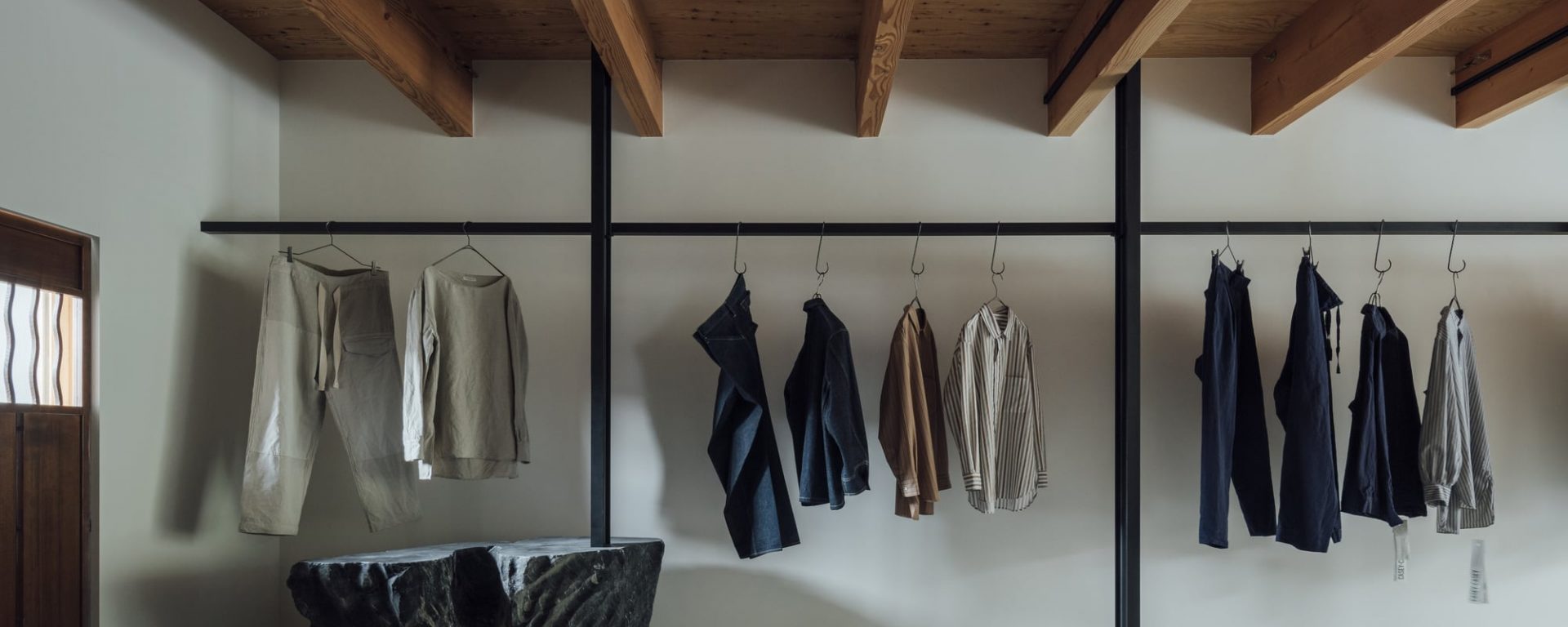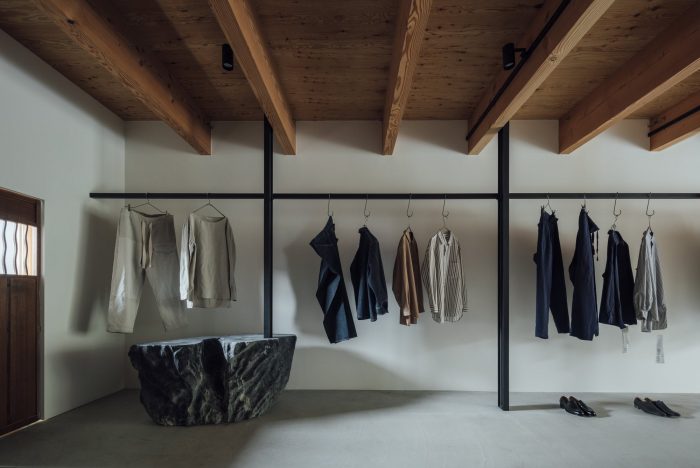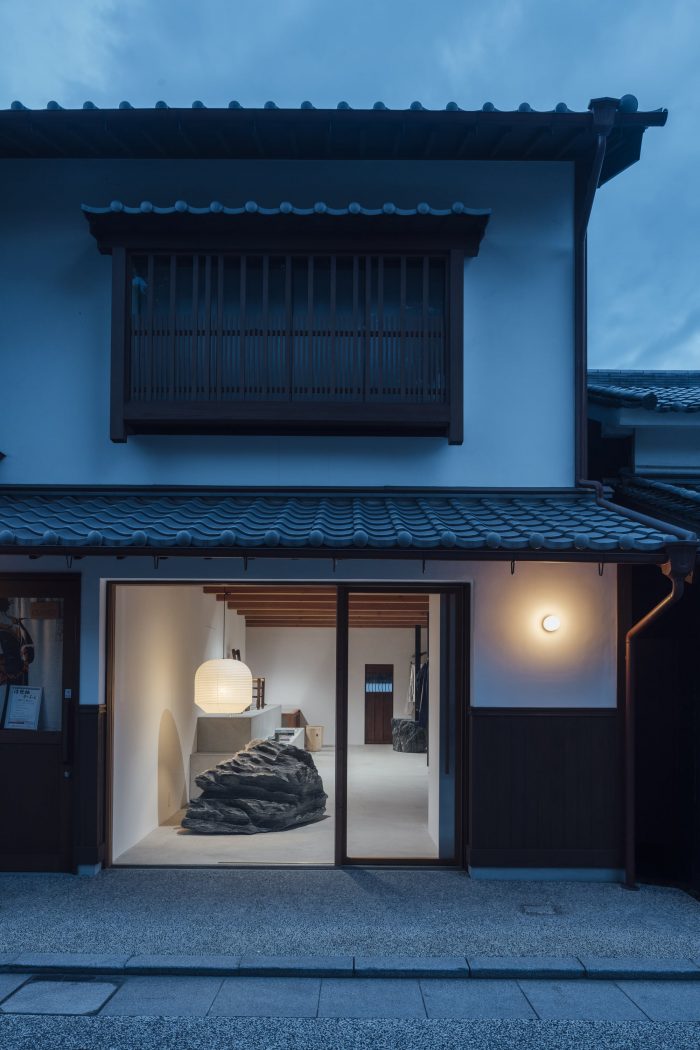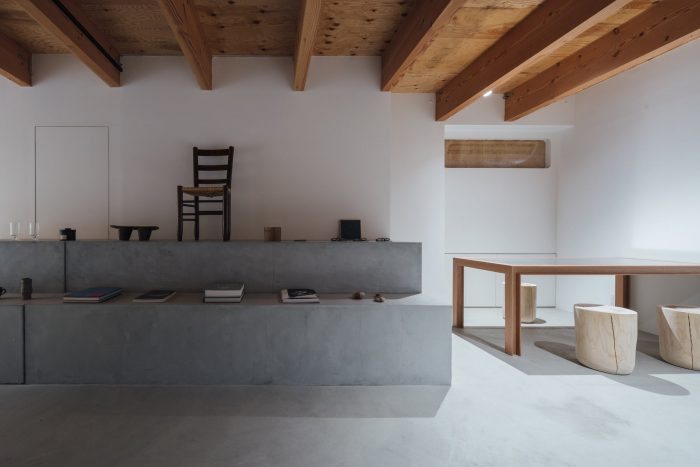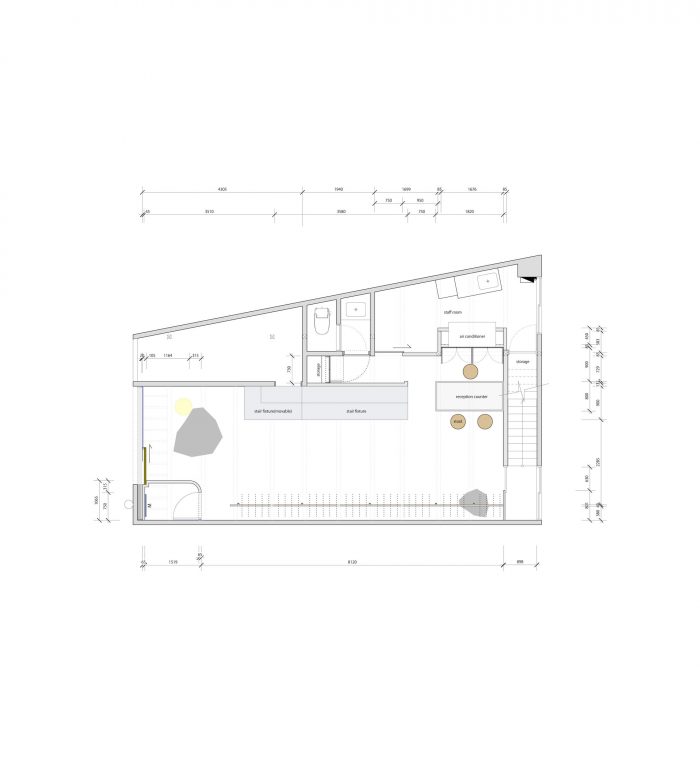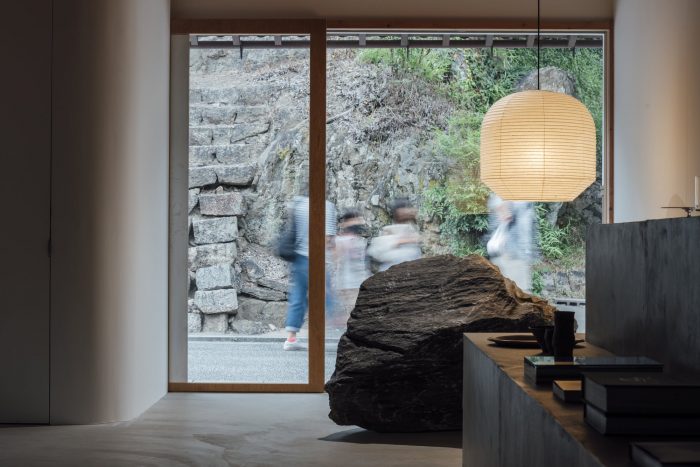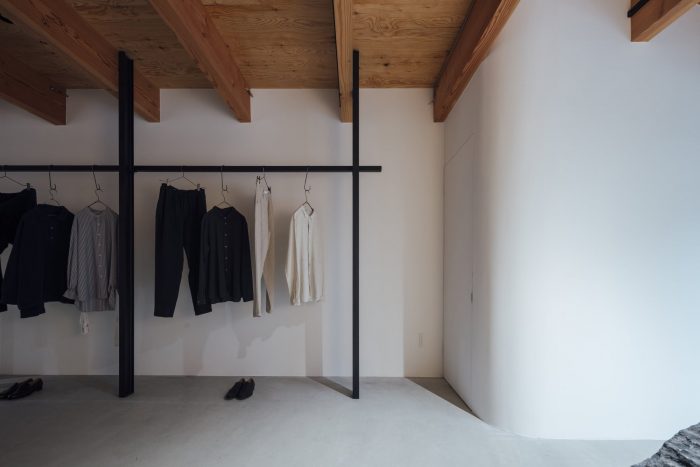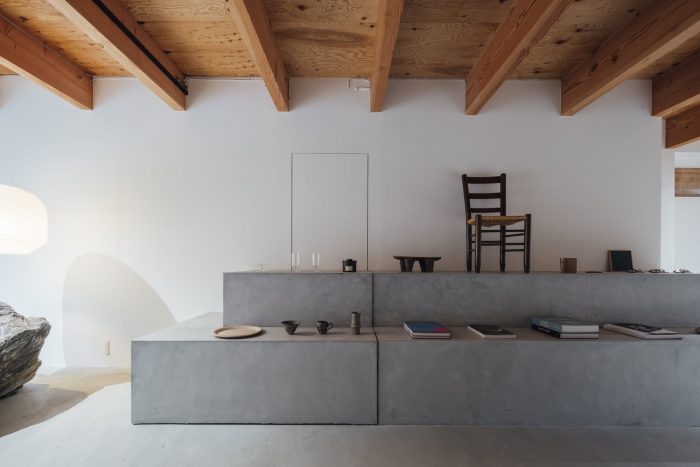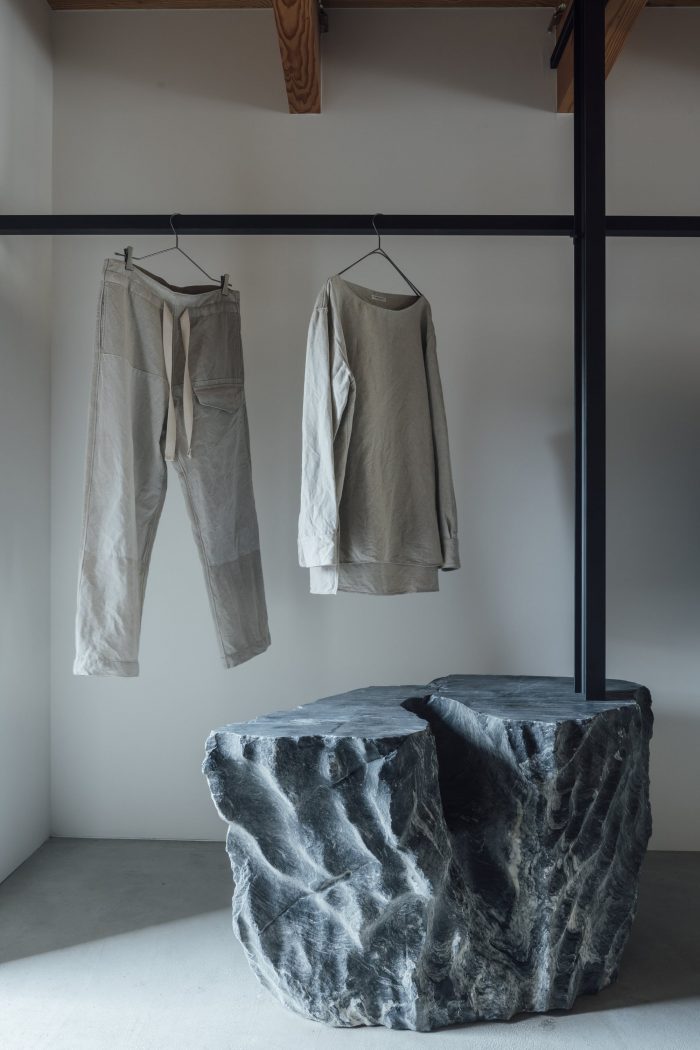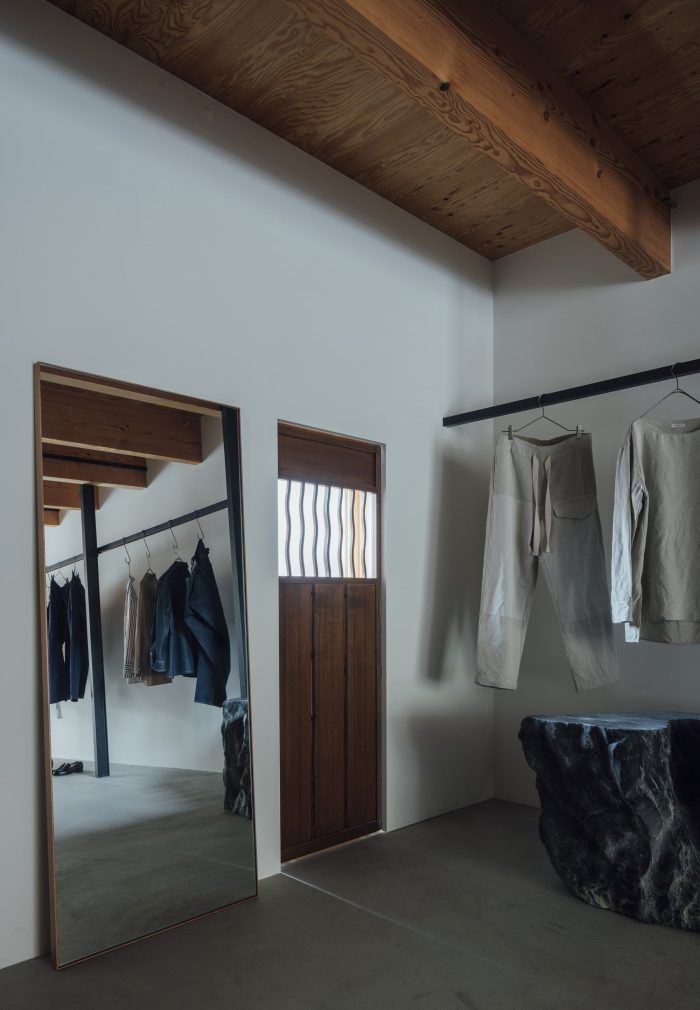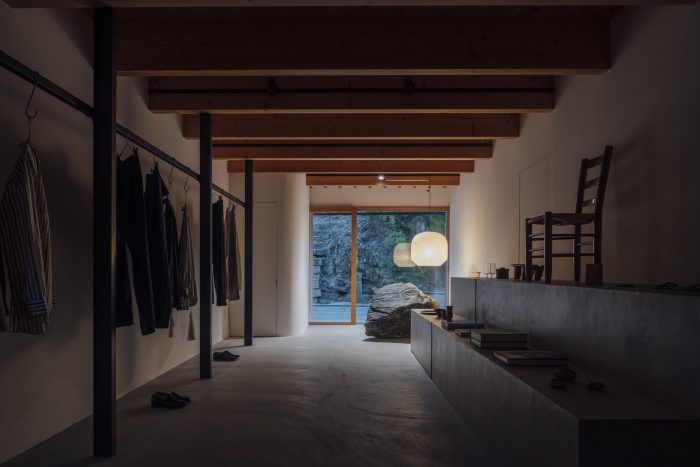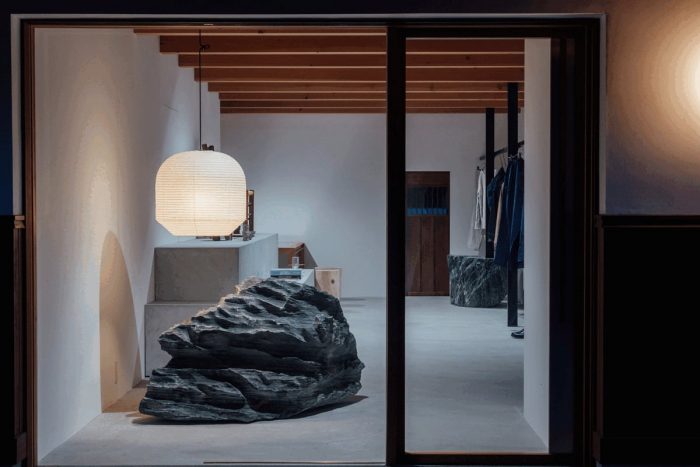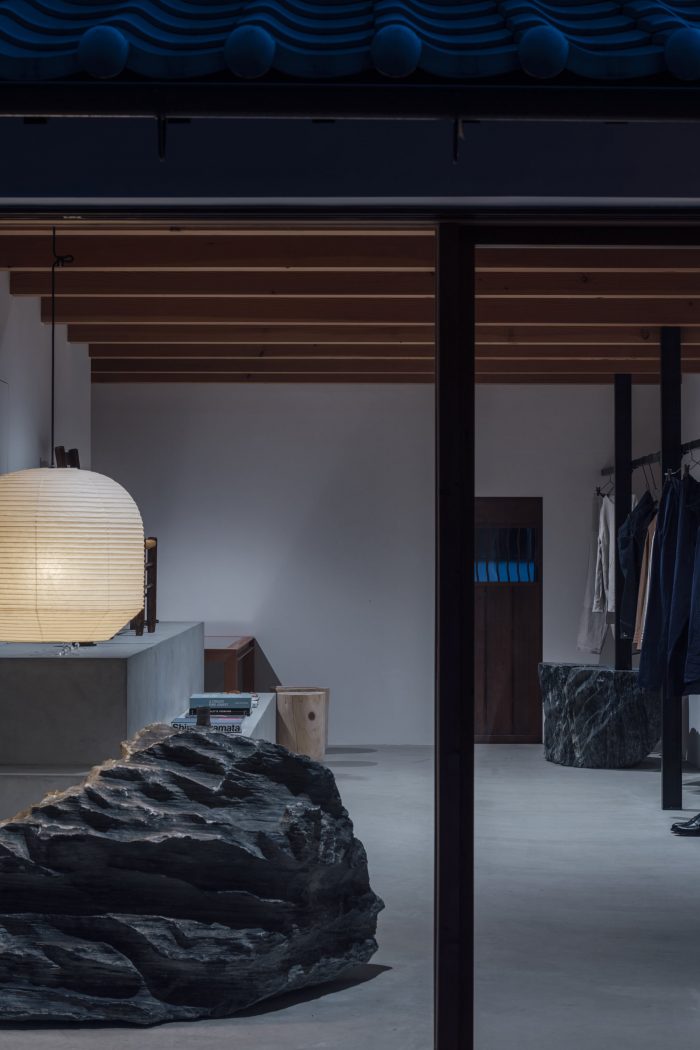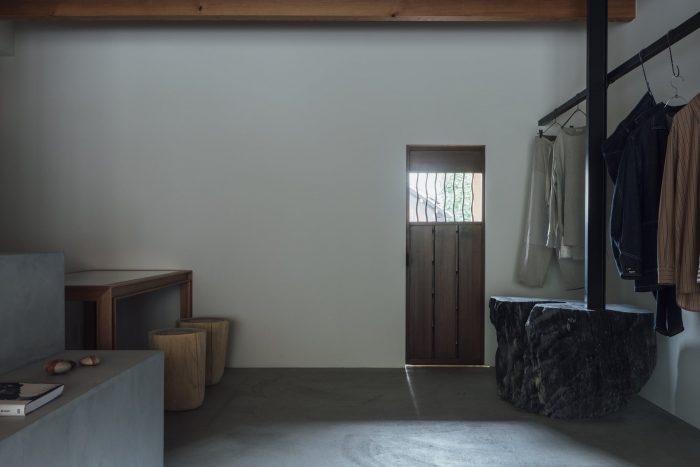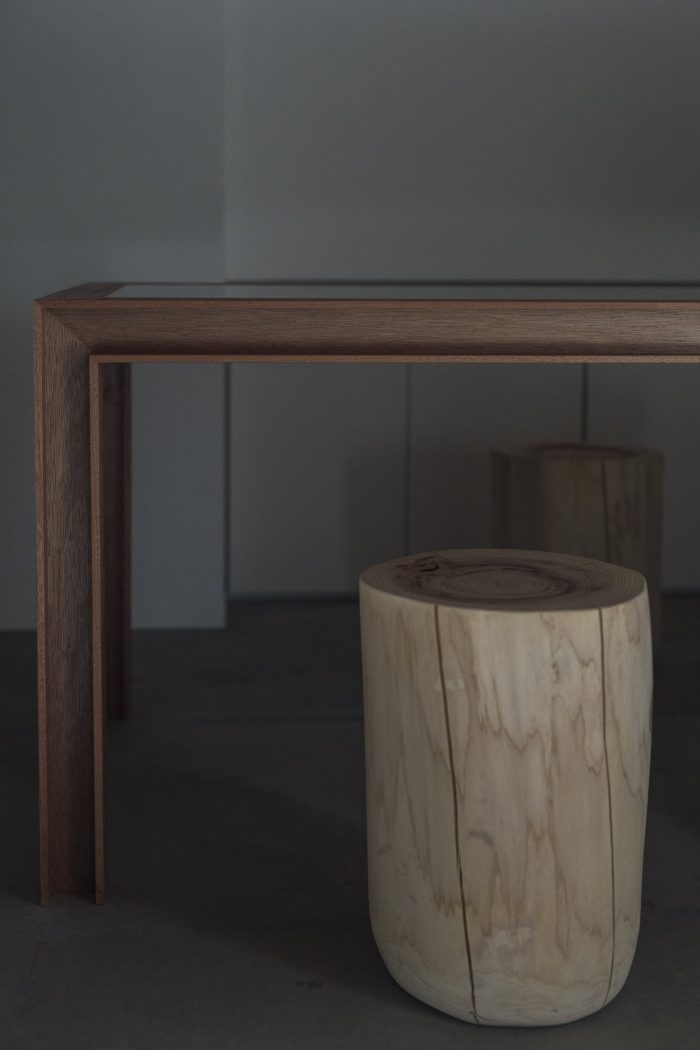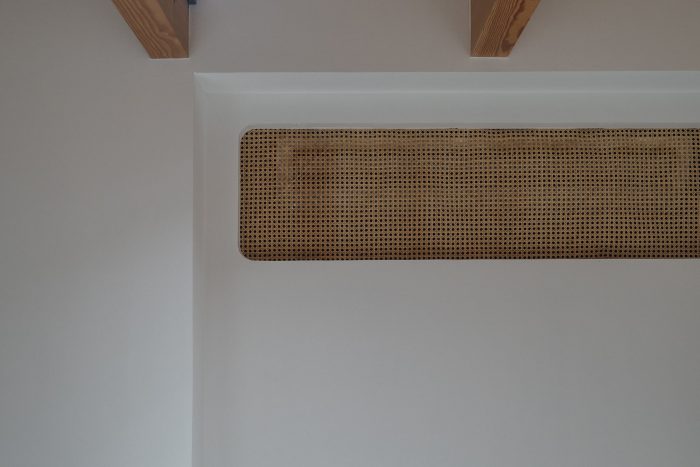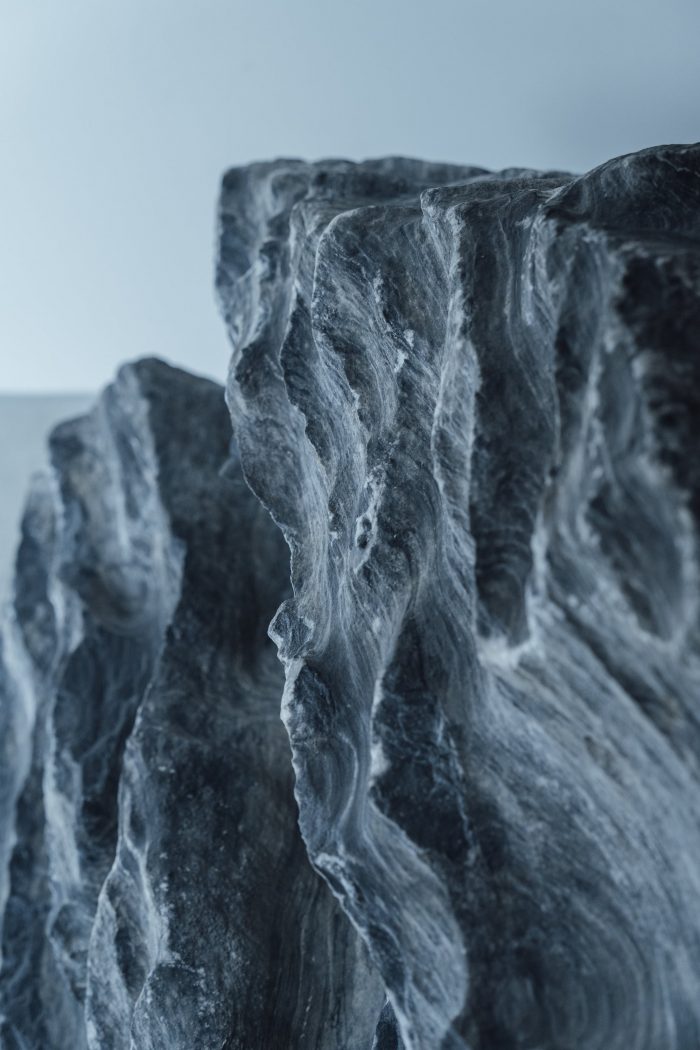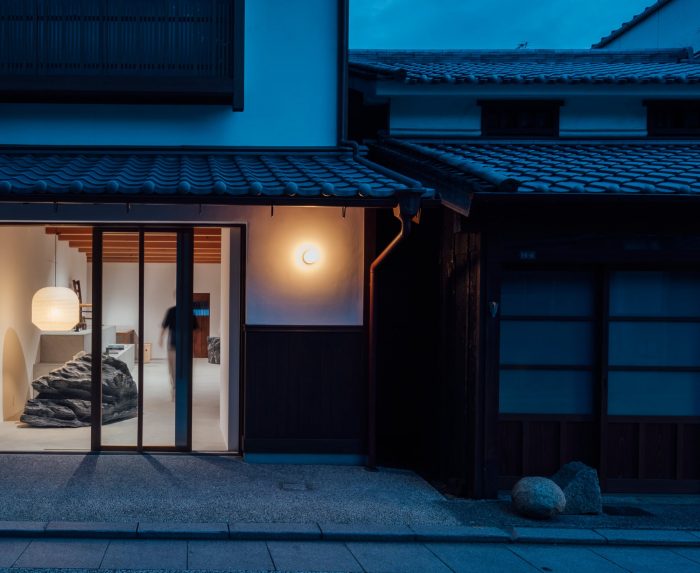虽然画廊的目的可以随时改变,但空间需要足够强大,以防止噪音干扰艺术作品和物品,并为展出的作品提供平衡的视野。然而,在这个项目中,未来展出作品的方向将由仓敷的比干历史街区的位置和未来建立的场地决定。换句话说,我们认为空间本身必须是这个画廊的第一个作品。然而,如果作品或其个性要突出,那么放在画廊里的印象和刻板印象会变得更强。这个画廊需要看起来好像它一直都在那里,并且有一种只能在这里诞生的个性。
While the purpose of a gallery can change from time to time, the space needs to be strong enough to prevent noise from interfering with the artworks and objects and to provide a balanced view of the works on display. In this project, however, the future direction of the works to be exhibited will be determined by the location of Kurashiki’s Bikan Historical Quarter and the site that will be created in the future. In other words, we thought that the space itself must be the first work in this gallery. However, if the work or its individuality were to stand out, the impression and stereotypes of what would be placed in the gallery would become stronger. The gallery needs to look as if it has always been there and has an individuality that can only be born here.
当我开始设计这个项目时,我带着这些想法在比干历史街区漫步。什么可以成为这个小镇的基石,而且是独一无二的?我想,比起花格窗这样的建筑设计,更自然、更基本的东西会更好…… 当我这样想的时候,我被某种景观所吸引。它是一块石头。出于某种原因,石头被无意中放置在比干历史街区的建筑和道路的边界,我觉得这些石头在统一的日式建筑中散发着一种个性的色彩。与主楼隔路相望的建筑是一座悬崖,但在悬崖顶上有一座神社,如果你仔细观察,可以看到一条石砌的楼梯,通向神社。
When I started designing this project, I was strolling through the Bikan Historical Quarter with these thoughts in mind. What could be the cornerstone of this town that is also unique? I thought that something more natural and fundamental would be better than an architectural design such as a lattice window… As I was thinking this, I was drawn to a certain landscape. It is a stone. For some reason, stones were unintentionally placed at the boundaries between buildings and roads in the Bikan Historical Quarter, and I felt that these stones radiated a color of individuality among the uniform Japanese-style buildings. The building across the road from the main building is a cliff, but there is a shrine at the top of the cliff, and if you look closely, you can see a staircase of stone masonry that leads up to the shrine.
如果你仔细观察,你可以看到一个石砌的楼梯通向神社,人们有时会坐在石头上,就像长椅一样。我还从一个邻居那里听到一个有趣的故事,仓敷以前是填海造地,这些悬崖曾经是海岸的码头。这些路边和悬崖不是人造的,而是自然风化和长期恶化的结果。在这个阶段,当要展出的艺术家和作品还没有决定的时候,我想没有什么能比得上这个地方的自然美景。我们认为,画廊的第一项工作是让仓敷的比干历史街区的路人清楚地认识到以各种形式存在于这个地区的石头的魅力。
If you look closely, you can see a stone masonry staircase leading up to the shrine, where people sometimes sit on the stones as if they were benches. I also heard an interesting story from a neighbor that Kurashiki used to be reclaimed land, and that these cliffs used to be the quayside of the coast. The curbs and cliffs are not man-made, but rather the result of natural weathering and deterioration over time. At this stage, when the artists and works to be exhibited are still undecided, I thought that nothing could compare to the natural beauty of the site. We thought that the gallery’s first work would be to make the passersby in Kurashiki’s Bikan Historical Quarter clearly aware of the charm of the stones that exist in various forms in this area.
细节。
大石块被斜着放在一个狭长的空间里。
第一块石头随意地放在门面玻璃内,就像从前面的悬崖上滚落下来一样,而后面的对角线石头则与H型钢柱融为一体,起到了巨大的捆绑石的作用。
为了充分利用正面的悬崖景观,外墙被打开,使其尽可能地透明。从建筑内部看悬崖的框架,让人有一种错觉,认为这是一幅关于该地区历史的巨大画卷。
内部空间有两个用灰泥制成的多功能台阶,用于展示艺术品和坐着。
Details.
Large stones are placed diagonally in a long and narrow space.
The first stone is randomly placed inside the facade glass as if it had tumbled down from the cliff in the front, while the diagonal stones in the back are integrated with the H-steel columns to function like giant bundle stones.
To make the most of the view of the cliff on the front side, the facade was opened to make it as transparent as possible. The framed view of the cliff from the interior of the building gives the illusion of a huge painting of the history of the area.
The interior space has two multifunctional steps made of mortar for displaying artworks and for sitting on.
部分可移动的台阶可以灵活使用,画廊内的尺度感变得更加异质化,就像人工塑形的石雕一样。在自然力的作用下,这些石雕是不可移动的,这种对比让人们对石雕的珍贵性产生了质疑,因为这些石雕是经过多年创造的。
每件家具和固定装置都像石头一样,经过精心设计,成为画廊里的一件艺术作品。我们希望未来摆放在这里的艺术作品能够相互影响,成为比干历史街区新的文化交流的起点。
The steps, which are partially movable, can be used flexibly, and the sense of scale within the gallery becomes more heterogeneous as if they were stone sculptures created by artificial molding. The contrast between the stone sculptures and the immovable stone sculptures, which were created by the force of nature, makes people question the preciousness of stone, which was created over many years.
Each piece of furniture and fixture, like the stone, has been meticulously designed to become a work of art in the gallery. We hope that the works of art that will be placed here in the future will interact with each other and become the starting point for new cultural exchanges in the Bikan Historical Quarter.
Architects: FATHOM
Area : 52 m²
Year : 2022
Photographs :Tatsuya Tabii
Manufacturers : EDOHOTARU, Kofukuan
Design : Hiroyuki Nakamoto
Stone : Kenzaburou Ohshio – Green Union
City : Kurashiki
Country : Japan

